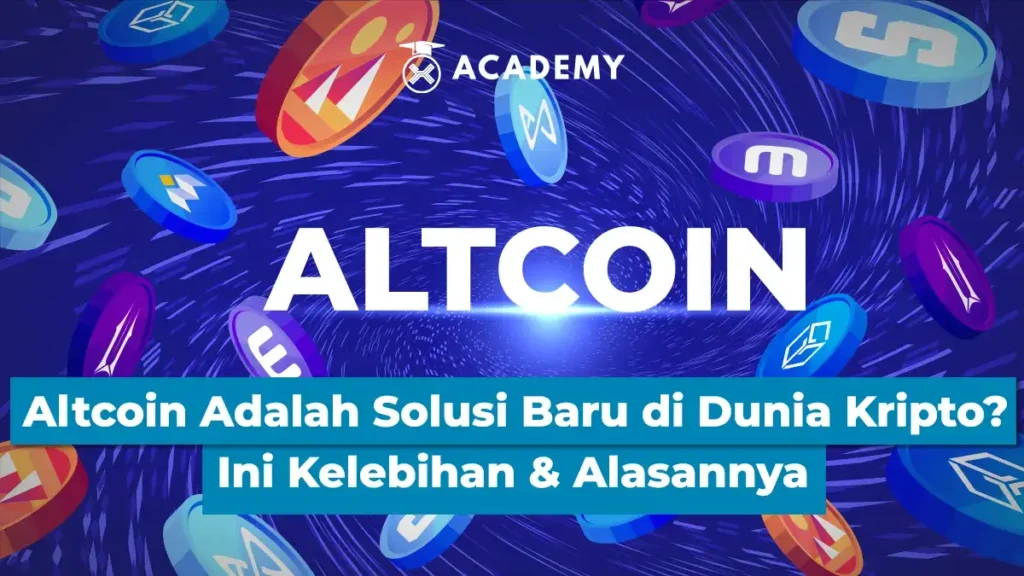Some altcoins use different consensus mechanisms to validate transactions, open new blocks, or aim to differentiate themselves from Bitcoin and Ethereum by offering new, more specific capabilities or purposes.
Most altcoins are designed and launched by developers with a different vision or use case for their token or cryptocurrency asset.
History and Development in the Crypto World

Altcoins attempt to fix the perceived limitations of their native or competing crypto assets and blockchains. The first altcoin was Litecoin, which was forked from the Bitcoin blockchain in 2011.
Litecoin uses a different proof-of-work (PoW) consensus mechanism than Bitcoin, called Scrypt (pronounced ess-crypt), which is more energy efficient and faster than Bitcoin’s SHA-256 PoW mechanism.
Ether is another altcoin. However, ether was not forked from Bitcoin. Ether was designed by Vitalik Buterin, Dr. Gavin Wood,, and others for use in Ethereum, the world’s largest blockchain-based virtual machine.
How Does Bitcoin Work?
Altcoins operate in a similar way to Bitcoin and Ethereum in terms of teknologi blockchain, but with some significant differences that give them unique characteristics and uses.
One important concept in the world of altcoins is the fork, which is the process when developers decide to branch off from an existing blockchain.
This happens due to protocol changes or disagreements among the developer community. These forks can result in new altcoins that use modifications of the original blockchain.
Others may fork or be developed from scratch, with the goal of creating a blockchain and token that appeal to a specific industry or group. For example, Ripple uses the XRP Ledger and XRP to attract the banking industry with a faster payment system.
Types of Altcoins Based on Their Functions and Uses
Based on their functions and uses, the following are the types of altcoins that you need to know.
1. Payment Tokens
As the name suggests, payment tokens are designed to be used as currency—to exchange value between transacting parties. A prime example of this payment token is Bitcoin.
2. Stablecoins
Since their inception, the trading and use of crypto assets have been characterized by high volatility. The purpose of stablecoins is to reduce this volatility by linking their value to another asset.
This is done by holding a reserve asset. Some of the assets held by stablecoin creators are fiat currencies, precious metals, or investment assets. The price fluctuations of stablecoins are usually within a very narrow range.
Well-known stablecoins to date include Tether’s USDT, MakerDAO’s DAI, and USD Coin (USDC).
In March 2021, payment processing giant Visa Inc. announced that it would begin settling some transactions on its network using USDC on the Ethereum blockchain, with plans to expand the settlement solution.
3. Security Tokens
A security token is a token that represents a fundraising effort or ownership. It can also represent a tokenized asset. Tokenization is the process of transferring the value of an asset to a token.
Any asset can be tokenized, such as property or stocks. For this process to work, the asset must be collateralized and stored transparently. Otherwise, the token would be worthless because it doesn’t represent anything.
Security tokens are regulated by the Securities and Exchange Commission (SEC) because they are designed to function like securities.
In 2021, Bitcoin dompet Bitcoin Exodus successfully completed a Reg A+ token offering authorized by the Securities and Exchange Commission, allowing $75,000,000 of common stock to be converted into tokens on the Algorand blockchain.
This historic moment marked the launch of the first digital security offering equity in a US-based issuing company.
4. Utility Tokens
Utility tokens are used to provide services within a network. For example, they can be used to purchase services, pay network fees, or redeem rewards.
Filecoin, which is used to buy storage space on a decentralized network and keep data secure, is an example of a utility token. Ether (ETH) is also a utility token.
Ether is designed to be used on the Ethereum blockchain and its virtual machine to pay for transactions.
The previous USTerra Stablecoin used utility tokens to try to maintain value tied to the dollar—which it lost on May 11, 2022—by minting and burning two utility tokens to create upward or downward price pressure.
Utility tokens can be purchased on exchanges and held, but they are designed to be used within the blockchain network to keep them functional.
5. Meme Coins
As the name suggests, meme coin are inspired by jokes or satire of other popular crypto assets.
Meme coins typically gain popularity quickly, often promoted by well-known influencers or investors looking to capitalize on short-term gains.
Many have referred to the sharp surge in these types of altcoins during April and May 2021 as “meme coin season,” when hundreds of these crypto assets experienced large percentage spikes based on pure speculation.
Advantages of Altcoins: Innovation and Variety of Choices
Altcoins are considered “better versions” of their original crypto assets because they aim to address perceived shortcomings.
Altcoins that offer more utility tend to have a better chance of survival, such as ether on the Ethereum network that has a real function.
Another advantage is that investors can choose from a wide variety of altcoins that serve different functions in the crypto economy.
Altcoin Disadvantages: Low Liquidity and High Risk
As for the disadvantages, altcoins have a smaller investment market compared to Bitcoin. Since 2016, Bitcoin has generally remained above 40% of the total global crypto asset market.
The altcoin market is usually dominated by fewer investors and low trading activity, resulting in limited liquidity.
In addition, it is not always easy to distinguish between different altcoins and their respective use cases, making investment decisions more complicated and confusing.
Another disadvantage is that some “dead” altcoins end up costing investors their money.
What is the Future of Altcoins?
Discussions about the future of altcoins and crypto assets have historical parallels with the situation that led to the issuance of the dollar by the federal government in the 19th century.
Multiple forms of local currencies circulated in the United States at the time, each with unique characteristics and backed by different instruments. Local banks also issued currency, sometimes backed by fictitious reserves.
The diversity of currencies and financial instruments is similar to the current altcoin market situation. There are thousands of altcoins available on the market, each claiming to serve a different purpose and market.
The current state of the altcoin market suggests that consolidation into a single cryptocurrency is unlikely.
However, it is estimated that most of the thousands of altcoins in the crypto market will not last long.
The altcoin market will likely become concentrated in a few altcoins—those with strong utility, clear use cases, and solid blockchain objectives—that will eventually dominate the market.
Advantages and Disadvantages of Altcoin Investment

It should be noted that one of the main advantages of investing in altcoins for investors is the opportunity to diversify their portfolio.
Altcoins offer a variety of choices with different functions and technologies, allowing investors to spread their risk across multiple crypto projects.
In addition, many altcoins have lower entry costs than Bitcoin, making them an attractive alternative for investors looking to participate in the cryptocurrency market without spending large amounts of capital.
However, there are also some drawbacks to consider. Altcoin volatility tends to be higher than Bitcoin, which can lead to extreme price fluctuations in a short period of time.
Not only that, the difficulty of determining which altcoins have successful use cases in the market is a challenge for investors.
Many altcoins do not have clear utility or long-term support, which makes the risk of losing value higher. Some altcoins may not even last long, leaving investors vulnerable to losses.
So, that was an interesting discussion about the definition of Altcoin, starting from its history, advantages to disadvantages that you can read in full in the Crypto Academy article at Indodax Academy.
Altcoin FAQ
1.What Are Altcoins?
Altcoins are cryptocurrencies other than Bitcoin, and sometimes including Ethereum. Altcoins encompass thousands of tokens designed for different purposes.
2. How Are Altcoins Different from Bitcoin?
Many altcoins were created as solutions to Bitcoin’s limitations, by offering faster transaction speeds, lower fees, or new features like smart contracts.
3. What Are the Most Popular Types of Altcoins?
Popular altcoins include stablecoins like USDT, utility tokens like Ether, and meme tokens like Dogecoin.
4. Is Investing in Altcoins Risky?
Yes, the altcoin market tends to be more volatile and carries higher risks than Bitcoin due to lower liquidity and a high number of failed projects.
5. Does Altcoin Have a Bright Future?
Only altcoins with clear utility and strong support are likely to survive into the future. Many other altcoins may disappear from the market.





 Polkadot 9.00%
Polkadot 9.00%
 BNB 0.51%
BNB 0.51%
 Solana 4.77%
Solana 4.77%
 Ethereum 2.37%
Ethereum 2.37%
 Cardano 1.58%
Cardano 1.58%
 Polygon Ecosystem Token 2.11%
Polygon Ecosystem Token 2.11%
 Tron 2.85%
Tron 2.85%
 Market
Market


